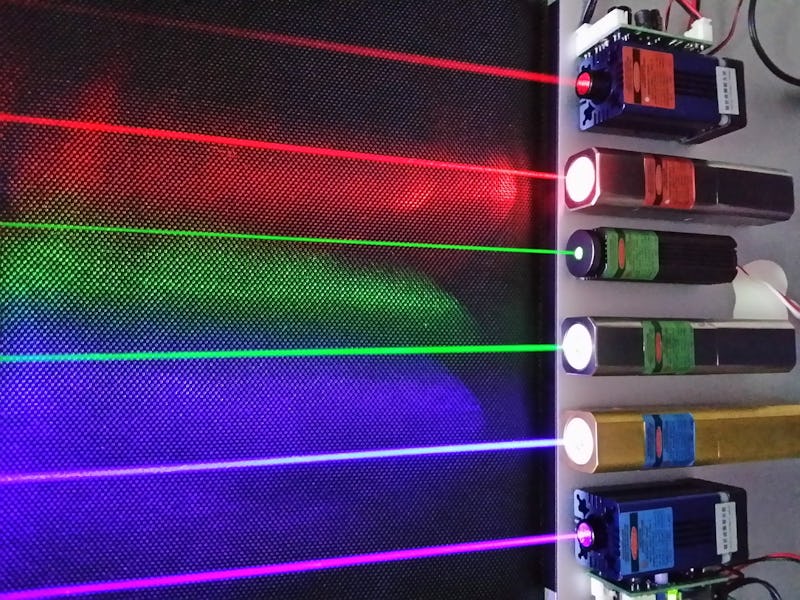Rubies Are Real-Life Kyber Crystals From 'Star Wars'
Lasers are just lightsabers without an end-point.

Kyber crystals, the rare Force-tuned element at the heart of Jedi lightsabers, are set to play a pivotal role in Rogue One, the upcoming stand-alone Star Wars movie. And while many young Earthlings certainly dream of scouring the galaxy for their own kyber crystal with which to harness the Force, we’ve got the next best thing right here at home: rubies. Kyber crystals are to lightsabers as rubies are to lasers. And let’s be honest, lasers are pretty cool, too.
Kyber crystals are central to Jedi mythology, and they are a crucial element in the construction of lightsabers, because they focus the weapon’s energy into a single blade. As a rite of passage, young Jedis are sent to the Crystal Caves on the planet Ilum to harvest their own kyber crystals.
There are no kyber crystals on Planet Earth, although we have something quite analogous: rubies. The very first laser, built by Theodore Maiman in 1960, had a ruby crystal at its heart as a way to focus and constrain light. They are the reason that we tend to think of laser light as red, although now they come in several hues.
The operation of a lightsaber requires knowledge of the Force, but lasers just need plain old regular physics. The word laser comes from an acronym for “light amplification by stimulated emission of radiation.” Basically, a crystal is contained between two mirrors, one that this 100 percent reflective and the other that reflects most of the light but allows a small fraction to slip through. Energy is pumped into the system, causing light to bounce back and forth through the crystal, gaining in amplification each time. The light escapes in a focused beam — the laser beam.
Maiman’s first laser, still operational today, has been called a “one-Gillette” laser, because its beam is powerful enough to bore through a single razor blade. But lasers can be made much less powerful and much more powerful than that. A laser pointer is only as dangerous as the cat you tease it with, though pointing it straight into your eyes isn’t recommended. Industrial laser cutters, on the other hand, can easily carve through diamonds.
Similarly, kyber crystals can be used in weapons of varying power. There are myths in the Star Wars universe of Sith superweapons powered by very large and extremely rare kyber crystals. The Death Star’s planet-zapping superlaser even had kyber crystals powering its evil heart, and there’s speculation that Rogue One could reveal more details of how it worked.
Rubies, unlike kybers, can be synthesized in labs fairly cheaply, which ensures purity and makes for great lasers. That’s good news for the U.S. military, which is experimenting with laser weapons that can be used to fend off enemy vehicles, drones, or missiles. If that doesn’t work, they could always try using the Force.